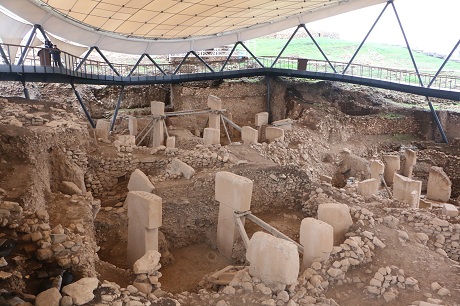Kurdshop - Gre Mirazan (or Khirabrashke), also known as "Gobeklitepe" in Turkish, is a Neolithic archaeological site located near the village of Khrabrashk in the city of Riha in North Kurdistan and is now defined as the remains of the oldest temple in the world.
Gre Mirazan has an ancient history of 12000 years and according to the archaeology found in Gre Mirazan, there is a temple and a building on the foundation of the institution. This means that Mesopotamia was previously defined as the cradle of all civilizations, but with the discovery of Gre Mirazan, all assessments of civilization and urbanization changes.

Gre Mirazan is regarded by some as an archaeological discovery of great importance because it could profoundly change the understanding of a critical period in the development of human society. Some researchers believe that the construction of the "Grdi Muhjiza" (Miracle Hill) may have played a role in the development of the civilization that later emerged, or as researcher Klaus Schmidt says, "first came the temple, then the city."
The human-made hill is 15 meters long, about 300 meters wide, and about 760 meters above sea level and was built in two stages. According to Klaus Schmidt, a German archaeologist who discovered the hill, it was intended for social or religious use and dates back 12000 years.
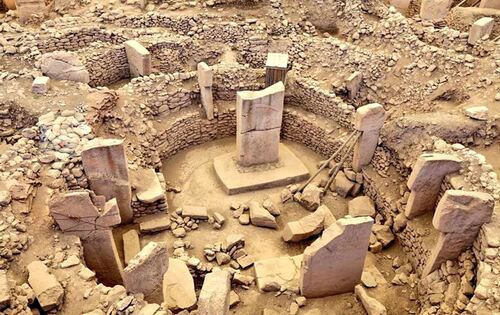
A part of Gre Mirazan was formed during the first stage, the Pre-Pottery Neolithic A. The T-shaped carved stone columns are the oldest megalithic columns in the world. Megaliths, the oldest and most widely used, date back to 9500 BC, and the rock megaliths are 5500 years older than the first cities in Mesopotamia and 7000 years older than Stonehenge in Britain.

In the second phase of the Pre-Pottery Neolithic B, the carved columns are smaller and stand in rectangular chambers on a floor made of clay.
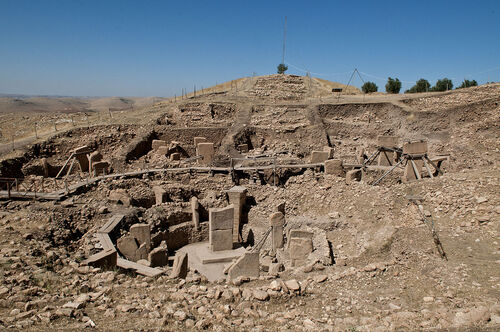
More than 200 pillars have been discovered in about 20 pools through geophysical investigations. Each column is about 6 meters long and weighs up to 10 tons. Special holes are dug in the ground and pillars are placed in the holes.
According to research, Gre Mirazan was abandoned after the Neolithic period B before pottery. Details of the building are unclear. Since 1996, excavations have been ongoing by the German Archaeological Institute, but large parts of it have not yet been excavated.
In 2018, Gre Mirazan has been designated a World Heritage Site by UNESCO.
Visual history and studies on Gre Mirazan
Before the discovery, the hill where Gre Mirazan is located was considered sacred by the people.
Gre Mirazan was first discovered in 1963 by the University of Istanbul and the University of Chicago through archaeological research. The American archaeologist, “Peter Benedict,” dates the stone tools collected from the mound to pre-Neolithic Pottery I; however, he misidentified the upper parts of the T-shaped columns as tombstones and thought that a Byzantine mausoleum was located on the part of the prehistoric period.
The hill has been cultivated for a long time and several generations of residents have usually moved and piled stones to clean up their fields. Probably, that is why the upper layers of the hill were corroded. Farmers sometimes tried to break some of the pillars because they thought of them as ordinary stones.

In November 1994, German archaeologist Klaus Schmidt, who had previously worked at Newalla Chori, was looking for another site to excavate. He examined the archaeological places in the area. In 1963, he came across a brief description of Miracle Hill written by Chicago researchers and decided to re-examine the site. He, who had seen similar buildings at Newalla Chori earlier, realized that the stones and pillars were prehistoric. He began digging in 1995 and in a short time brought out the first large T-shaped column. Until his death (2014), Schmidt conducted excavations for the Riha Museum and the German Archaeological Institute. Since then, the Institute's research on the hill has been supervised by Le Claire. Recent excavations are not as large-scale as Schmidt’s, often focusing on documenting and preserving previously excavated sites.
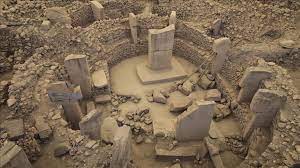
Construction of Gre Mirazan
Gre Mirazan follows geometric shapes. This figure is a triangle with all angles equal and connecting perimeters A, B, and D. This means that the people who built Gre Mirazan had at least a basic knowledge of engineering. A study from 2020 entitled “Geometry and Building Plans in Gre Mirazan” shows that areas A, B, and D all consist of a set and there is a hierarchy in which area D is located on the upper side. This search rules out that each surface was created and used one at a time.
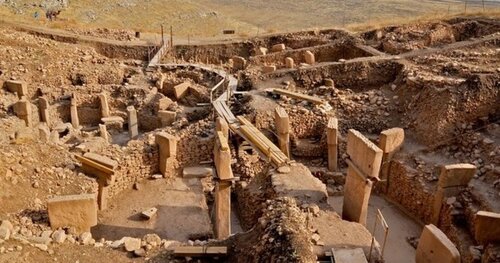
Overall, Gre Mirazan has a history of 12000 years and might be said to be the oldest human-made building. In other words, the discovery of Gre Mirazan and the research that is still being done on it could change all assessments about civilization; even the rise of religion, art, literature, urbanization, and all fields has changed the assessments that have existed so far. Because the current construction in Gre Mirazan shows that there is trust and order, that order is the main condition of urbanization, and that the mind and idea of urbanization are much older than hitherto known.

